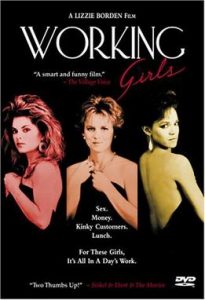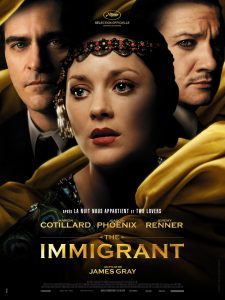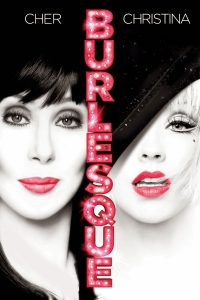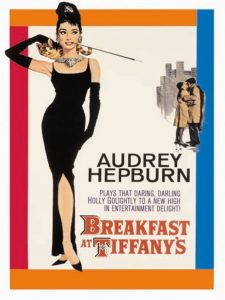By: Victoria Lopatka
Sex work has been featured openly in the media since at least the 1950s, but we haven’t necessarily gotten better at portraying it in the last seventy or so years. Some shows and movies still feed into negative stereotypes and only portray a very small sliver of what sex work is. Thankfully, we’re slowly starting to see better and better portrayals of sex work and sex workers in the cinema and on TV.
Working Girls (1986)

If you an example of how to portray sex workers in a positive way in media, look no further than Working Girls. Sex workers, just as other characters, deserve rich, detailed lives with backstories, wants, desires, dreams, etc. If we aren’t giving sex workers rich backstories, then they become objects of pleasure, instead of humans. In Working Girls, characters are seen doing homework, sleeping in, doing laundry, riding their bikes, having conversations — things real humans and real women do.
Portrays sex work as: something real humans do.
The Immigrant (2013)

This movie portrays a Polish immigrant (played by Marion Cotillard) who comes to live in New York City and quickly realizes she has limited options to support herself. She is soon under the control of a pimp, and has no means to escape him or her new lifestyle. Sex work is not viewed as a choice or a real career, but instead as a last-ditch effort involving abuse and cruelty that she regularly endures. In reality, unfortunately, this is what some sex workers endure, and it is important to shed light on situations such as this so people know it occurs. On the other hand, all aspects and all situations involved in sex work need to be and deserve to be portrayed accurately in our media.
Portrays sex work as: exploitive, a last ditch effort for desperate people.
Burlesque (2010)

In many movies about strippers and sugar babies, you’ll see a similar arc: a sweet, young girl trying to make it in the world, pay rent, pay for school, etc. who takes up stripping or being a sugar baby, eventually finding a man who “saves” her. This is done either financially or through a romantic relationship. This arc is seen in Marilyn Monroe’s “How to Marry a Millionaire” (1953) and the classic “Pretty Woman” (1990). It glosses over any difficulties or conflict resulting from sex work, and portrays the woman as Barbie doll arm candy. Repeat after me: not all sugar babies are college students trying to make ends meet. Not all strippers are young Western gals new to the big city. Are some? Yeah, and it’s great to see them represented! But are some not? Of course, and we need more media about sex work to accurately portray all sides of the profession, instead of just ones that play into stereotypes and show the really good and the really bad.
Portrays sex workers as: exclusively young girls trying to make ends meet and be saved by a man.
Deadwood (2004) / Game of Thrones (2011)
I decided to group these two together because one of them portrays sex workers well, and the other does not. Take a moment to make some guesses, taking into consideration all that has been said in this article thus far.
Deadwood breaks away from the “hooker with a heart of gold” arc, and fleshes out their sex workers with storylines, interests, and hobbies beside sex work, as well as struggles and successes. Game of Thrones, meanwhile, shows sex workers as flat, plastic characters who are eventually killed by someone after having sex with them. No one seems to bat an eye when fan-favourite characters brutally beat and kill sex workers. If you hadn’t already guessed, Game of Thrones does an unsatisfactory job at portraying sex workers.
Portrays sex workers as: fleshed out and interesting vs. flat and dead.
Breakfast at Tiffany’s (1961)

“What?? I don’t remember any sex work in this movie?” You might not remember it because what Holly Golightly (played by Audrey Hepburn) does for work is never explicitly said or shown. A lot is left to the imagination, with references to getting “$50 for the powder room.” In a 1968 Playboy interview, Truman Capote, the original author of the novella-turned-movie, danced around calling Holly a call girl and instead used the term “authentic American geisha.” Holly and the entire movie managed to avoid the stigma and shame that is often associated with sex work, and let audiences see Holly as simply beautiful, classy, and youthful. It’s great that Holly is portrayed in this way, but one must wonder why it seems to be suggested that respect and sex work are shown as mutually exclusive.
Portrays sex work: as vague, hidden.
Riverdale (2017)

(If you aren’t yet caught up with Riverdale, you may want to skip this section.) In the most recent season of the Netflix teen drama, not one, but two sex workers have been subtly introduced. First Cheryl’s mother, Mrs. Blossom, has turned to sex work to pay for the lavish lifestyle that her and Cheryl had been enjoying in previous seasons. She entertains gentleman callers in a red silk robe in the mansion, while her daughter, disgusted, begs her to stop. This portrayal is both good and bad. Mrs. Blossom is portrayed as a classy woman at all times, discussing how she enjoys the attention of gentleman callers. In some scenes, she is happy, almost glowing. It is also interesting that she is an older woman doing sex work — usually TV tends to shy away from the sexuality of moms and most older women. The negative side of this portrayal is that sex work is shown as a last-ditch, save-the-house effort, which isn’t always the case.
Next, we have Betty’s estranged brother, Chic. When Betty and her mother ask him what he does, he scoffs and says “fantasy fulfillment!” so quickly that you might have missed it. He also mentions that he has a “client” on the way. At first, I was excited to see where the show would take this new character, but it quickly goes downhill. Later in the episode, Chic is attacked and stabbed in his apartment, further perpetuating the idea that sex work gets you “mixed up with the wrong people.” He watches Betty sleep later that night, and he seems menacing, unhinged, and crazy.
Portrays sex workers as: classy, older women in mansions, but also unhinged, unhappy brothers in sketchy apartments.
Documentaries/crime shows (CSI, Law & Order, etc.)

A large amount of the screen time portraying sex workers shows them as victims or perpetrators of a crime. Law & Order, CSI, and multiple documentaries, such as The Craigslist Killer, show sex workers as victims of murder. Monster, a 2003 documentary, for example, introduces serial killer and sex worker, Aileen Wuornos, a mentally unstable woman who murdered and robbed multiple clients. On the flip side, documentaries like Hot Girls Wanted (2015), show young people leaving their families to live and work in a makeshift brothel/home. The portrayal of sex workers is almost parody, making a joke at their expense such as when incredibly young, foolish girls explain to their tearful moms why they don’t wear condoms, saying, “He didn’t actually cum in me, it just looks that way for the camera!” The reason this is problematic is not because situations like this never happen, but because these shows and documentaries only portray a tiny sliver of what sex work is like, leading the audience to stereotypes and misinterpretations about the profession.
Portrays sex workers as: seedy, mixed up with the wrong crowd, worrisomely inexperienced, something to make fun of.
Hung (2009) / Magic Mike (2012)
This series and this movie both deserve a shout-out for portraying men doing sex work. Men are sex workers, too!
Portrays sex work as: something men do, too.







